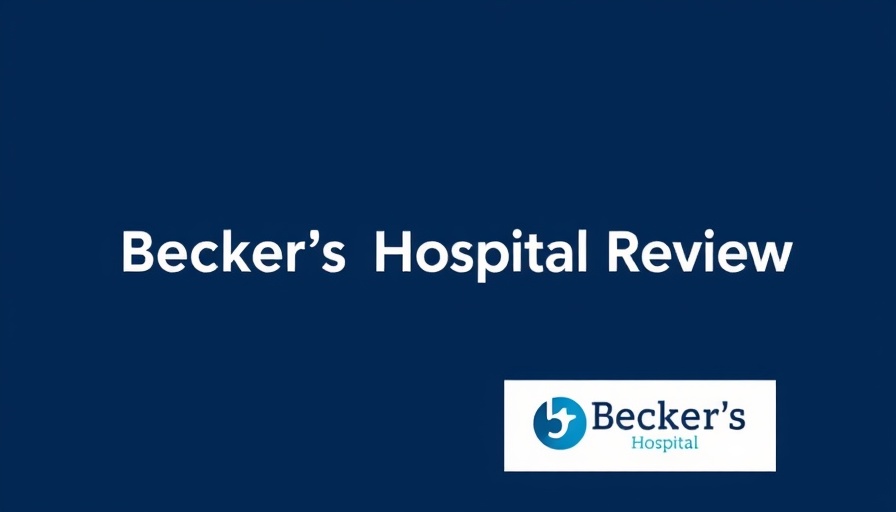
BayCare's Bold Move: A New Era in Healthcare Innovation
On April 30, Clearwater, Florida-based BayCare Health System marked a significant milestone by breaking ground on a new $548 million hospital and outpatient facility in Palmetto, Florida. The BayCare Manatee Hospital is set to redefine healthcare access in Manatee County, becoming the health system's 17th hospital and its first nonprofit facility in that region. Expected to open its doors in 2028, the new facility promises to provide 154 private beds with room to expand to 207, aiming to meet the growing healthcare demands of the community.
The Significance of the HealthHub
Integral to this ambitious project is a 45,000-square-foot BayCare HealthHub, scheduled to launch in 2026. This facility will house a variety of services, including primary and specialty care, laboratory testing, and imaging services. By transforming the patient experience and streamlining access to essential health services, the HealthHub aligns with modern healthcare trends emphasizing convenience and accessibility. In this context, integration of technology such as telehealth services and patient engagement tools will enhance care delivery, making healthcare more patient-friendly.
A Shift Towards Local Leadership
This project is particularly noteworthy against the backdrop of BayCare's recent $4 billion disaffiliation from Trinity Health. Executives emphasize that this strategic move signals a new era of local governance and organizational agility. Amid rising competition in Florida's healthcare market, local leadership is believed to foster better responsiveness to community needs. Innovations such as voice AI agents and healthcare automation are expected to play pivotal roles in improving practice efficiency and enhancing patient engagement.
Emphasizing Employee Benefits and Retention
As BayCare forges ahead with its expansion, a focus on employee health benefits and retention strategies is crucial. With the launch of the new hospital, BayCare plans to implement healthcare HR strategies aimed at nourishing a supportive work environment. By leveraging tools for practice automation and streamlining medical office workflows, BayCare can optimize practice revenues while ensuring compliance and enhancing job satisfaction. Engaged employees are often more productive and committed, leading to superior patient care outcomes.
Future Predictions for Healthcare in Florida
As healthcare in Florida evolves, the BayCare Manatee Hospital is poised to be a catalyst for change. The integration of remote therapeutic monitoring (RTM) programs will allow for better chronic disease management, particularly for aging populations who require senior care solutions. Additionally, advancements in telehealth revenue opportunities will ensure that healthcare remains accessible, especially for those who may face mobility challenges. With insights drawn from the latest trends in healthcare automation, BayCare is set to lead with innovative services that prioritize patient safety and satisfaction.
Concluding Thoughts: Embracing Change in Healthcare
The establishment of the BayCare Manatee Hospital signifies a promising step toward improving health outcomes in Florida’s Manatee County. For healthcare providers, the expansion offers insights into how to refine practice management and enhance patient delivery through innovative strategies. As the region anticipates the opening of this new facility, stakeholders, including independent physicians and pharmacy owners, must evaluate the implications of these changes on practice profitability and patient engagement systems.
If you’re a healthcare provider or practice owner, now is a great time to reflect on how advancements in healthcare compliance and patient engagement tools can transform your practice model. Engaging with these innovations will not only place your practice at the forefront of the changing landscape but also bolster your commitment to delivering quality healthcare. Explore how integrating such tools can lead to improved clinic cost savings and practice efficiency!
 Add Row
Add Row  Add
Add 




Write A Comment